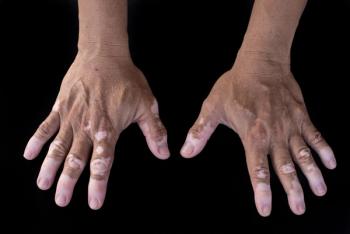
Obese Patients Have ‘Significantly Higher’ Severe Atopic Dermatitis, Abnormal Lipid Profiles, Study Finds
Previous research has shown an association between atopic dermatitis and obesity. But these findings elaborate on that observation and point to a connection to abnormal lipid metabolism and elevated "bad" LDL cholesterol levels.
A new
The research, published in the Annals of Dermatology, found that 47% of obese patients had severe AD, compared to 24% of nonobese patients. The obese AD patients also had elevated triglyceride and LDL-cholesterol levels compared with nonobese patients.
The interest about the association between atopic dermatitis (AD) and obesity is increasing, yet the possibility of abnormal lipid metabolism has never been investigated before, according to the authors. The findings suggest that patients with AD who are obese have a greater propensity to have abnormal lipid metabolism.
Led by Chang Ook Park, M.D., of Yonsei University College of Medicine in Seoul, Korea, the study examined 167 AD patients, including a subset of 36 who were obese. The obese group had a median Eczema Area and Severity Index (EASI) score of 20, nearly double the score of 11 that non-obese patients had. Obese AD patients also reported significantly higher itch intensity scores.
The lipid panel results showed obese AD patients had median triglyceride levels of 142 mg/dL, near the borderline 150 mg/dL
The obese AD patients in the study also had a substantially higher level — more than four times — of immunoglobulin E (IgE), an antibody produced by the immune system that plays a
“AD patients who are obese had higher serum total IgE levels and higher numbers of allergens sensitized, which may also contribute to the increased severity of symptoms,” wrote Park and colleagues. “Taken together, obesity is a factor that should not be overlooked and AD patients who are obese should be monitored for any possible abnormal lipid metabolism.”
Newsletter
Get the latest industry news, event updates, and more from Managed healthcare Executive.






















































